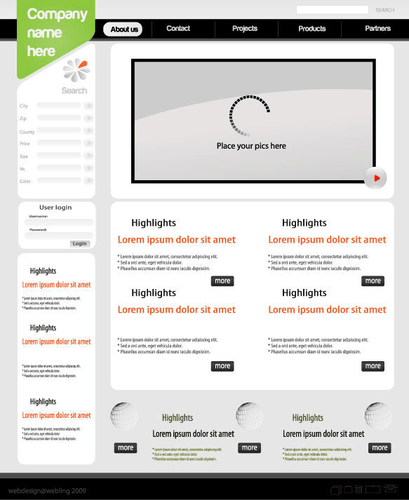5 2 Explain and Identify Conversion Costs Principles of Accounting, Volume 2: Managerial Accounting

Analyzing conversion costs helps companies adjust pricing strategies in response to changes, such as rising labor wages. Calculating conversion costs involves identifying and quantifying relevant conversion costs expenses over a specific period. This includes gathering data on workforce expenses and overheads from payroll records, timesheets, and utility bills. In conclusion, conversion cost is a vital aspect of accounting and manufacturing that can greatly impact a company’s bottom line. By understanding the components of conversion cost, how it is calculated, and strategies to reduce it, businesses can make informed decisions that help them remain competitive and profitable. Automation can reduce the need for direct labor, significantly reducing labor costs.
Who should use conversion values in Google Ads?
Manufacturing facilities can be significant energy consumers, and reducing energy consumption can help manufacturers reduce their conversion costs. Manufacturers can reduce energy consumption by implementing energy-efficient technologies, such as LED lighting and equipment, and by implementing energy management systems to monitor and control energy usage. The total conversion cost in this example is $43,000, which is the sum of the total direct and indirect costs. By using conversion costs, we can calculate an efficient way of determining equivalent units and unit costs.

Manufacturing overheads:

Conversion costs play a key role in determining the Cost of Goods Sold (COGS), influencing the pricing strategy. Businesses need to set prices that not only cover conversion costs but also ensure profitability and competitiveness in the market. Thus, each cost concept provides a somewhat different view of the costs incurred to create products, though both concepts include the cost of direct labor. This means that the toy company spends $10 on direct labor and manufacturing overhead for each doll it produces. In that case, producing a different product or reducing production volumes may be more profitable. Alternatively, if the conversion cost of producing a particular product is low, the company may increase production volumes to take advantage of economies of scale.
How to add values to conversions in Google Ads
This can result in increased costs for expedited shipping, lost sales, and damage to the outsourcing company’s reputation. Inefficient or outdated accounting systems can make it difficult to accurately track and allocate costs, impacting the accuracy of conversion cost calculations. Manufacturers may need to invest in modern accounting systems to improve the accuracy of their conversion cost calculations. Automated processes can help reduce energy consumption by optimizing production processes and reducing idle time. Manufacturers can identify and address energy inefficiencies using sensors and other monitoring technologies, such as excessive machine downtime or overproduction.
It is rudimentary to gauge the value of closing inventory since it is a line item reported on both the income statement and the company’s balance sheet.

Components of Conversion Costs
If they were \(100\%\) complete with regard to conversion costs, then they would have been transferred to the next department. If they were 100% complete with regard to conversion costs, then they would have been transferred to the next department. It is easier to track the materials and conversion costs for one batch and have those costs follow the batch to the next process. In the Peep-making process, the direct materials of sugar, corn syrup, gelatin, color, and packaging materials are added at the beginning of steps 1, 2, and 5. While the fully automated production does not need direct labor, it does need indirect labor in each step to ensure the machines are operating properly and to perform inspections (step 4). From Insurance Accounting a managerial perspective, understanding the conversion cost ratio allows businesses to evaluate the allocation of resources and identify areas for improvement.
Conversion Cost Formula
It is essential to assign direct and indirect costs to each product is essential. Direct costs can be traced back to a specific product, while indirect costs cannot be directly traced to a specific product. Outsourcing production can increase the risk of intellectual property theft or infringement.

Manufacturing Overhead Costs
By analyzing this variance, companies can identify areas of improvement and take corrective actions. For example, if the conversion cost per unit is $9 and the raw material cost per unit is $3, the total production cost per unit is $12. To plan the production budget, the conversion cost per unit can be multiplied by the expected number of units to be produced in the future.
- While there’s nothing wrong with those bidding strategies and they can perform very well for your account, they can sometimes fall into the trap that I just mentioned.
- If they cannot sell the product at this price, they may need to identify areas where they can reduce costs or improve efficiency to lower their conversion cost and remain profitable.
- In a business that uses a high degree of automation, it is likely that manufacturing overhead costs will comprise the bulk of all conversion costs.
- Automated processes can help reduce energy consumption by optimizing production processes and reducing idle time.
- Materials costs can fluctuate based on factors such as changes in commodity prices or supplier costs.
Formula
Job costing is ideal for companies Accounting Periods and Methods that produce customized products, while process costing suits companies that produce standardized goods. Production processes vary depending on product complexity, batch size, and equipment. These variations can impact the time and resources required to produce a product, affecting the calculation of conversion costs.
